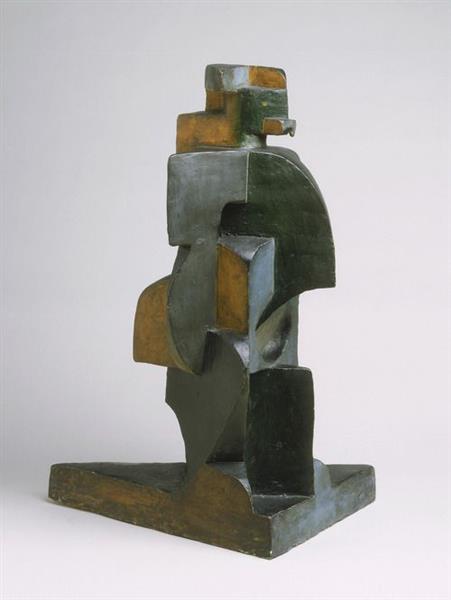Description
Juan Gris' painting "Harlequin", created in 1917, is an iconic work that stands out not only for its cubist technique, but also for its rich visual and symbolic complexity. Juan Gris, one of the greatest exponents of cubism, developed a unique approach that synthesizes formal elements with a vibrant sense of color. In this particular work, the harlequin, a character loaded with multiple meanings in art and culture, becomes a symbol of the duality of existence, between the comic and the tragic.
The compositional structure of “Harlequin” is notable for its solidity and the way it challenges conventional notions of depth and space. Gris uses interlocking geometric shapes for volumetric constructions that bring the harlequin to life in a way that flows between the abstract and the figurative. Each fragment of color is integrated into the work with an almost mathematical precision, demonstrating the artist’s technical mastery. The shapes are arranged in such a way that the viewer’s eye slides around the composition, creating a visual dialogue that strengthens the interaction with the work.
The colour palette is rich and varied, with shades of yellow, green, blue and black predominating, combining to give depth and vitality to the harlequin. Gris employs colour not only as a means of describing the subject, but as a language that evokes sensations and emotional states. The way colours are juxtaposed and mixed suggests a rhythm that reflects both the dynamism of the character and the complexity of his interpretation.
The harlequin, the central figure of the painting, is presented in a posture that evokes both movement and stillness. His representation is not simply that of a theatrical character, but embodies a reflection on identity and transformation. This figure, traditionally associated with comedy and tragedy, becomes a medium through which Gris explores broader themes of human existence, inviting the viewer to consider the multiple layers of meaning that underlie the apparent simplicity of the subject.
It is also interesting to note that the use of the harlequin figure in 20th-century art is not exclusive to Gris; artists such as Pablo Picasso and Georges Braque also delved into this type of representation. However, Gris' contribution is distinguished by his unique approach and his ability to amalgamate the influences of cubism with the deeper symbolism of the character. The work thus becomes a point of reference within the cubist movement, where technique is not just a tool, but a vehicle for the expression of human complexity.
In conclusion, Juan Gris's "Harlequin" is a work that transcends the categories of Cubism, becoming a space for reflection on identity, duality and the human experience. The composition, color and symbolism of the harlequin intertwine in an artistic expression that continues to resonate, inviting the viewer to a deeper exploration of the themes it raises. It is a brilliant example of how the simplicity of a character can be transformed into a vehicle for emotional and existential complexity, placing Juan Gris in a prominent place within the history of modern art.
KUADROS ©, a famous painting on your wall.
Hand-made oil painting reproductions, with the quality of professional artists and the distinctive seal of KUADROS ©.
Painting reproduction service with satisfaction guarantee. If you are not completely satisfied with the replica of your painting, we will refund 100% of your money.

